Land Yacht
Explore sail shape, area and angle to the wind needed for a wind powered vehicle to effectively capture wind energy.

Connect
(5-10 Minutes)
It is a windy weekend at the beach and Jack and Jill are out to have a bit of fun. They have this old cart they normally use, but today it’s Jill’s turn to push Jack and Zog the Dog, and the weather is really windy, which makes it very hard work for her.
Jill gives up in the end and Jack can understand why. Zog the Dog does his best to help out and suddenly he sees an old towel half buried in the sand. Jill spots it at exactly the same time and they discuss between them how using the towel, the wind power, and a few other things, it may be possible to make a kind of land yacht that will safely take them all for a fun ride.
How can you make a safe cart that is powered by the wind ... and carries at least one person?
Let’s find out!
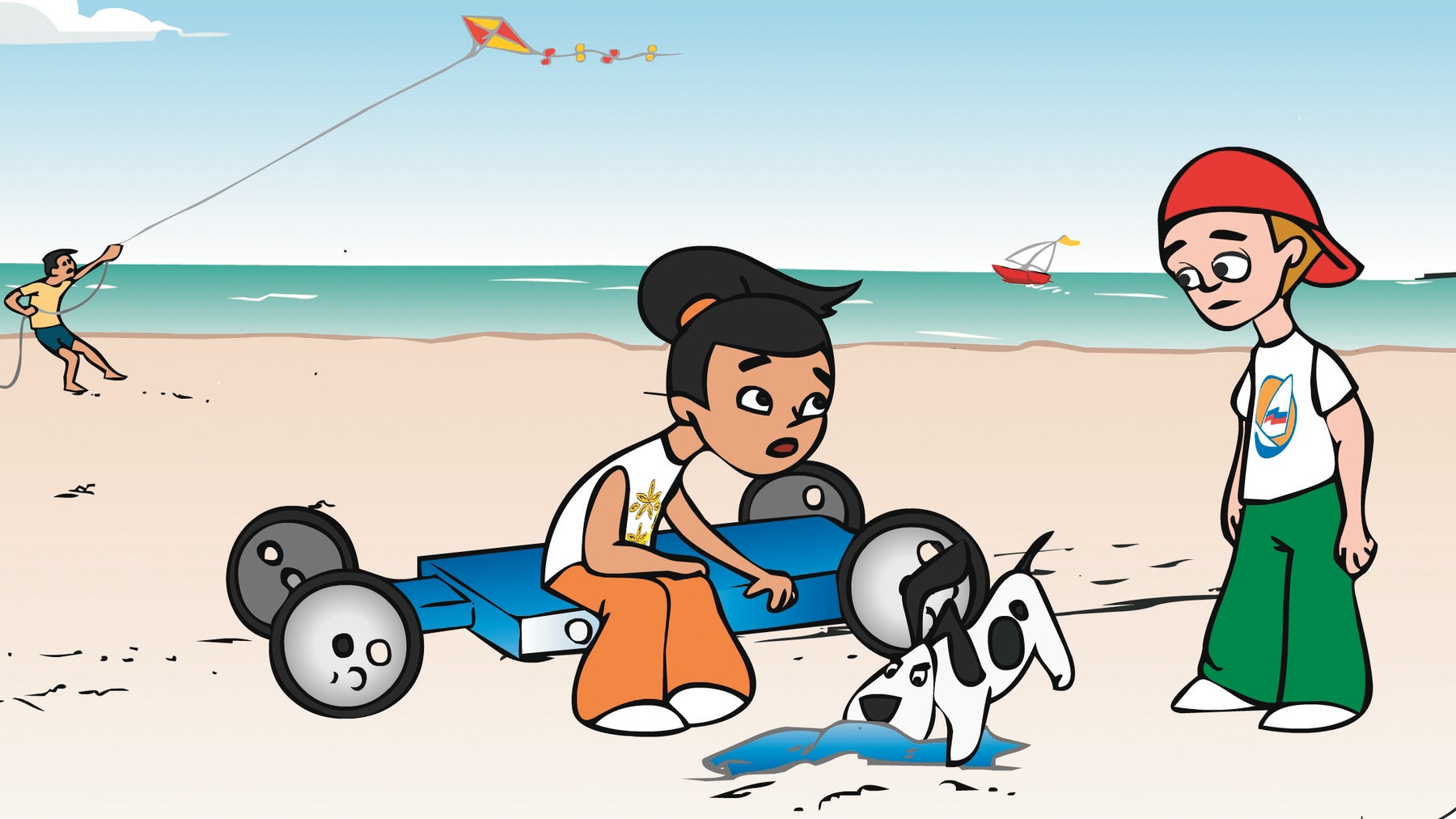
Construct
(20-25 Minutes)
Make Your Test Track
Stick a 4-meter (≈ 4 yards) strip of masking tape across a stretch of floor and mark it off every 10 cm (≈ 4 in) from the fan. Now we are ready to build models!
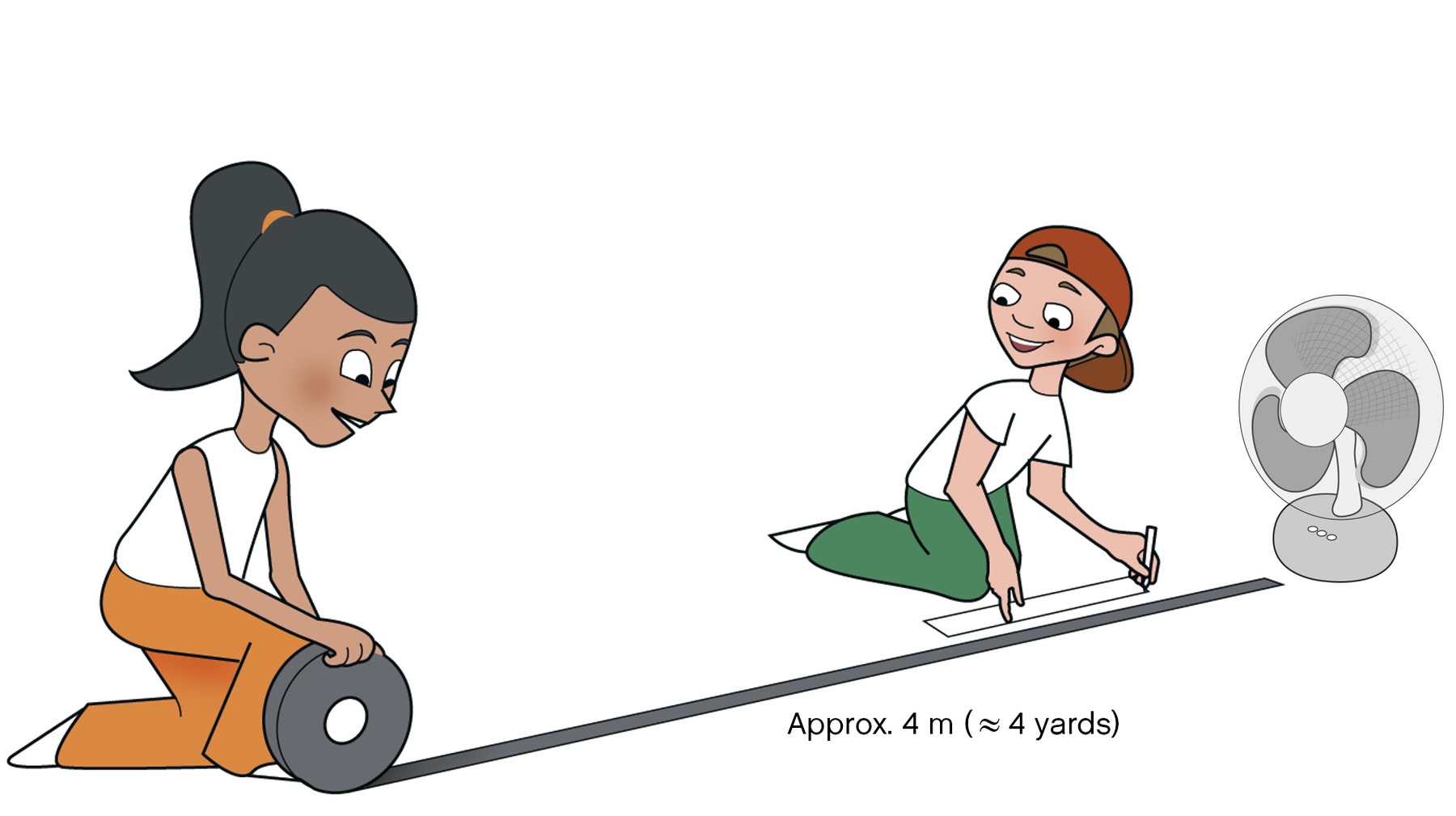
Warning! This may be dangerous!
Warning!
Fans are potentially dangerous. Make sure that students handle them with great care!
Build the Land Yacht
(all of Book 9A and book 9B to page 5, step 12)
Build it with the small sail first.

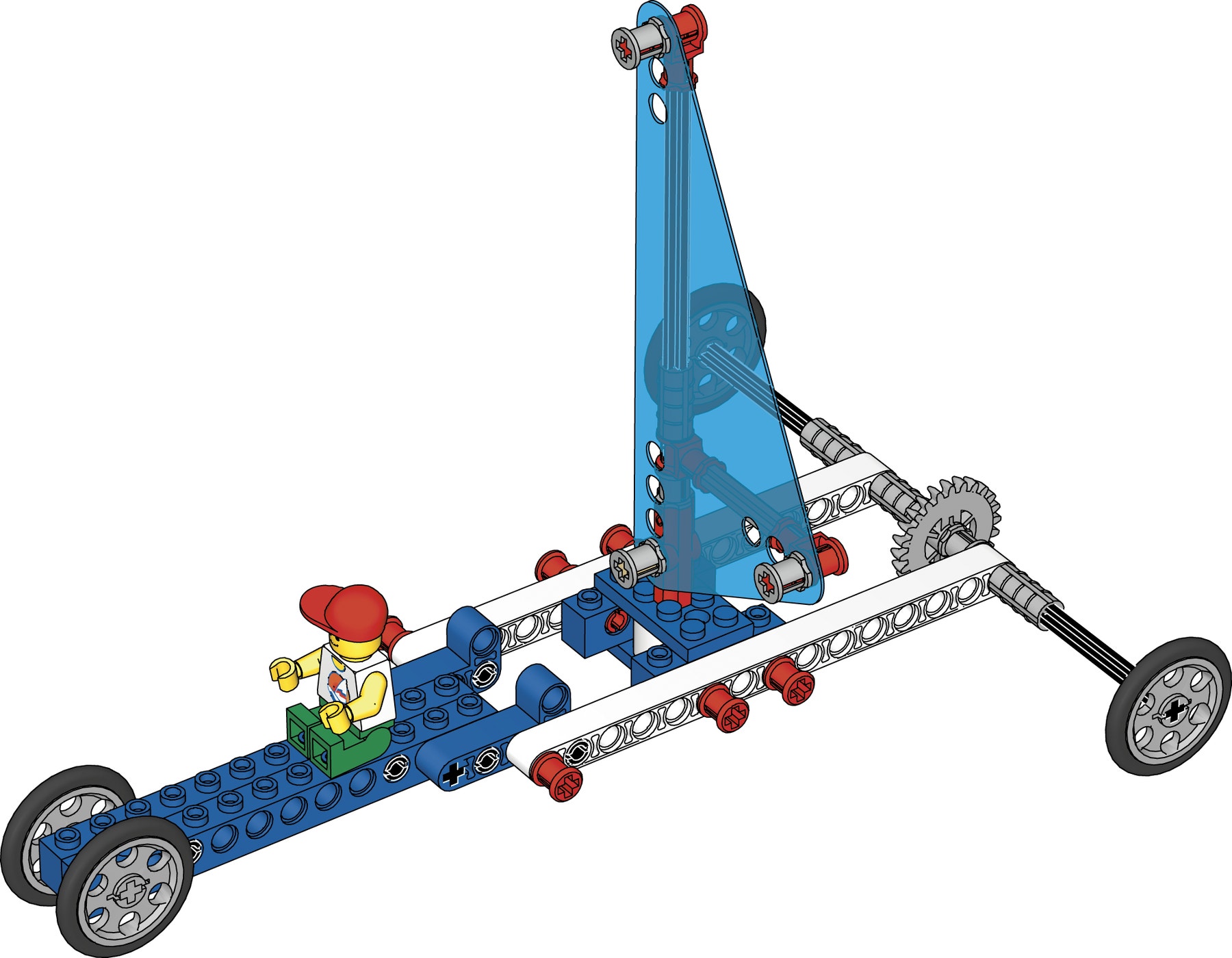
Contemplate
(20-25 minutes)
What difference does sail size make?
Predict and test: what difference could there be between the 40 cm2 (≈ 15 in2) (small), 80 cm2 (≈ 31.5 in2) (medium), and 160 cm2 (≈ 63 in2) (large) sails on the yacht. How far will each roll ... and (optional) how fast?
Test at least three times with each sail attached to obtain a scientifically valid answer.
In our tests, the small sail rolled about 1.5 m, the medium about 2 m and the large about 2.5 m. Double the area gathers more wind energy but does not double the distance.
Why? The further from the fan, the weaker the wind! Larger sails moved faster at first. But all the sail sizes stopped rolling after about 10 seconds. None of them sail faster than the wind!
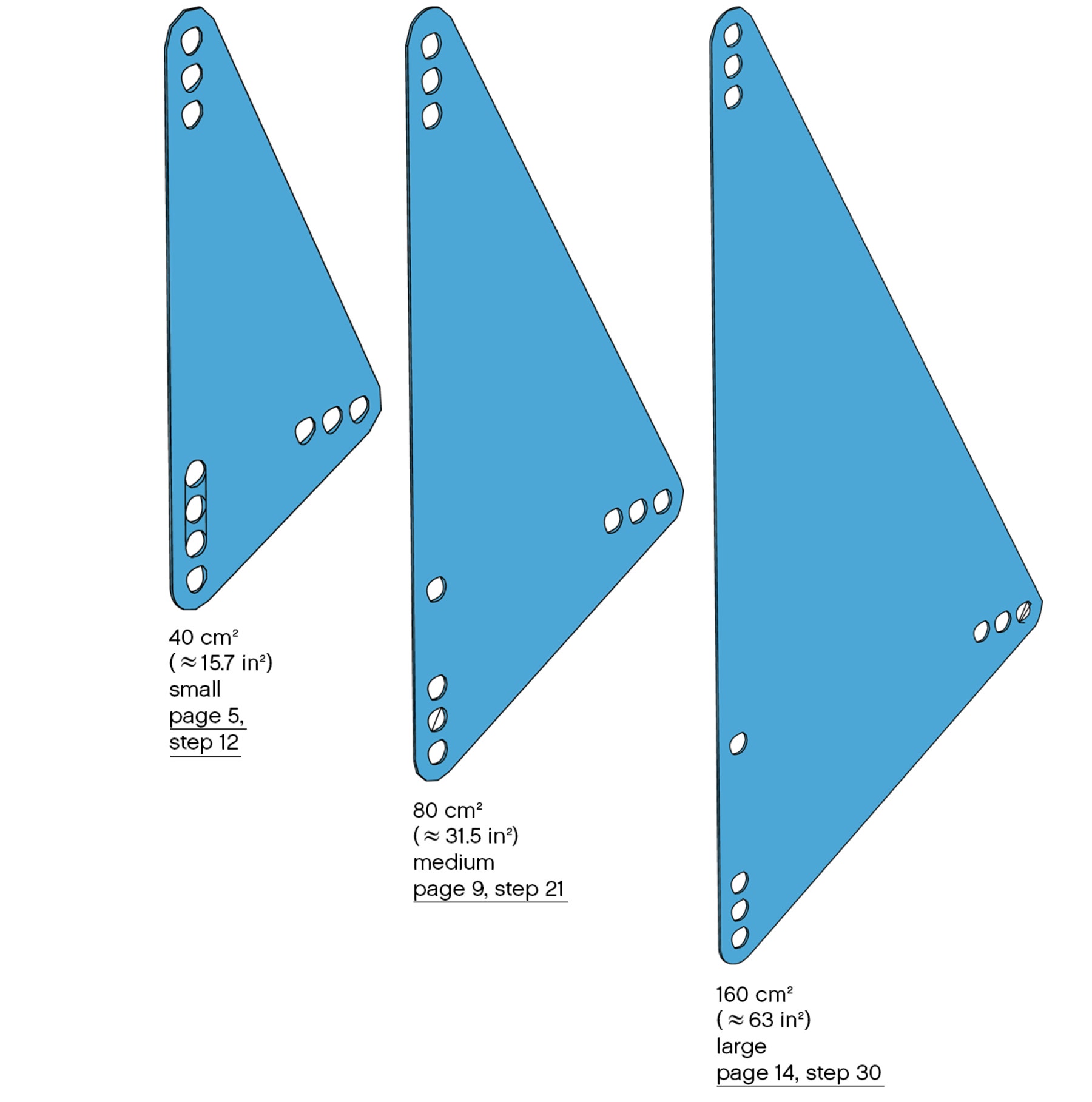
Tip
Choose ONE speed setting to do all the tests. Any speed will do. We used high speed.
Note
Your ‘serious’ scientists might also suggest testing the land yacht with just the bare mast, i.e. with no sail at all, so you might wish to try that as well.
What if the wind is blowing from an angle?
Launch your land yacht at different angles across the wind stream. Can you explain what happens?
At most angles except D the yacht still moves forward! One part of the wind’s force is deflected off the sail, propelling it forward.
The other part of the force tries to blow it sideways. In fact a land yacht sailing across the wind at angles B and C can go very fast – but could also flip over.
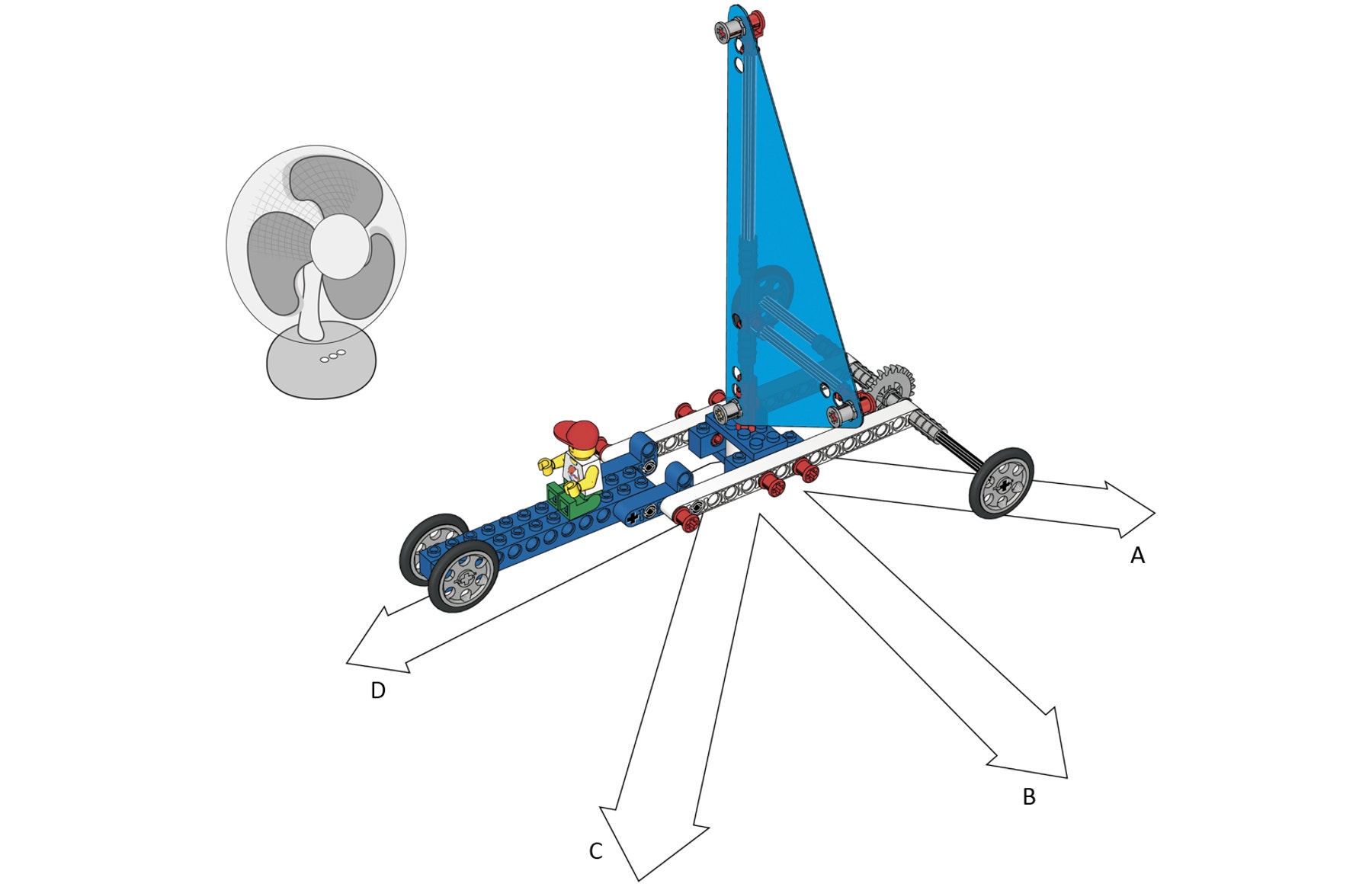
Did you know?
The LEGO figure weighs 3 g (≈ 0.1 oz).
The yacht weighs about 55 g (≈ 1.94 oz).
The weight brick is 53 g (≈ 1.9 oz).
Predict and test how the yacht would perform with a weight brick load.
Does sail shape matter?
Try making card or paper sails with the same area but a different shape. Find out about Square Riggers, Kon-Tiki, Chinese Junks, and Arab Dhows from books or by searching the internet.
Continue
(25-30 Minutes)
The Wind Sucker
Rebuild the model to page 24, step 15.
Hold the model 2 m (≈ 2 yds) away facing the fan (set on high speed). Predict what will happen when you let go. Then try it! Can you explain?
It builds up speed running towards the fan. The wheels may skid when it is close to the fan.
The energy from the wind is collected by the sails, geared down (3:1), which increases the force and turns the wheels, but in the opposite direction. When it skids – the wind force one way is equal to the friction force of the tires pushing the other way
Idea
Predict and test what happens if you face it away from the fan.
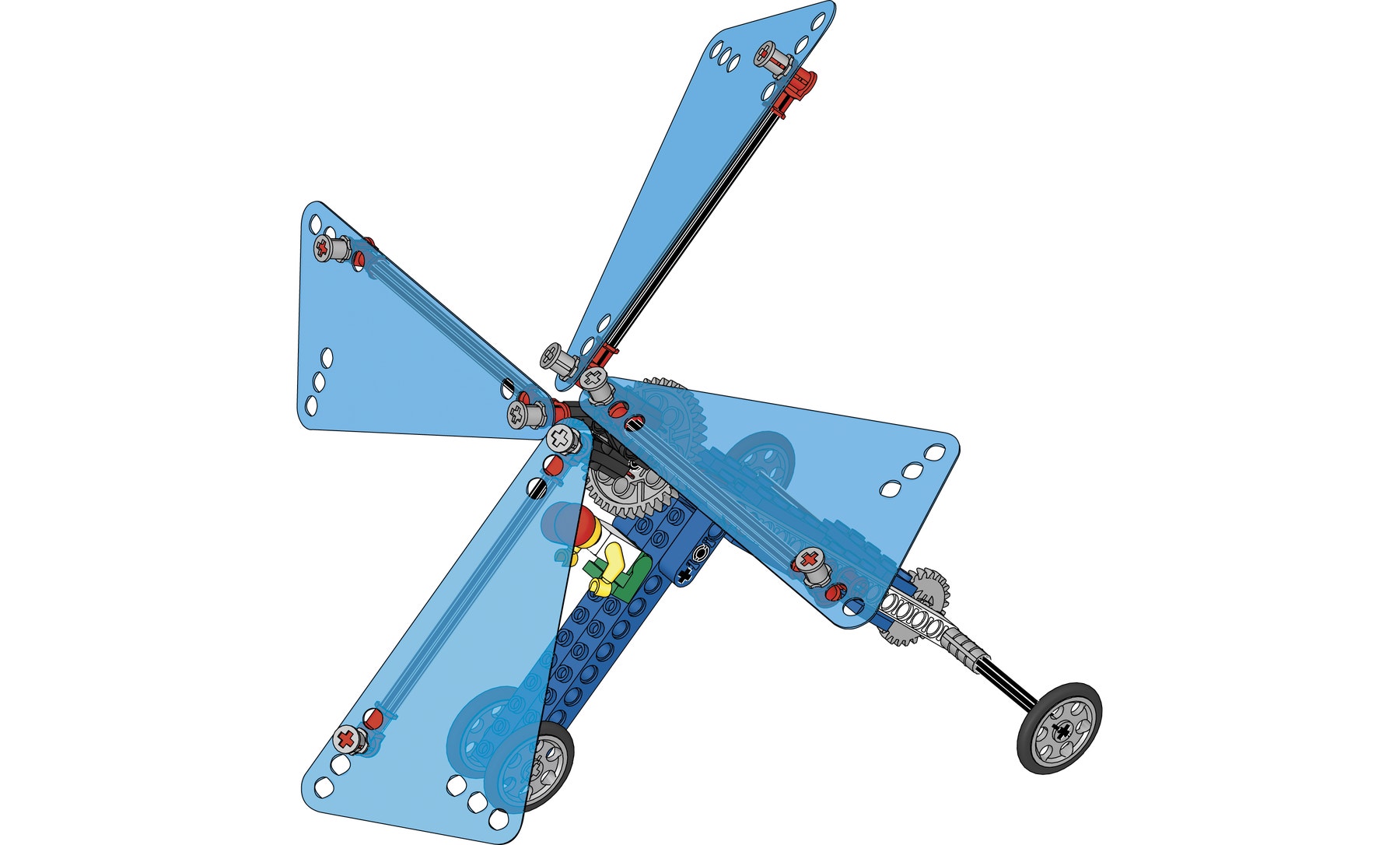
Making it more efficient?
Add a weight brick and see what happens. Swap the thin wheels for big wheels.
If it is skidding, adding weight increases friction by pressing the tires harder onto the floor. Large wheels also have more area in contact with the floor, i.e. friction and grip increase and it moves forward. It will also move faster (larger wheels).
Teacher Support
Students will explore the concepts of:
Scientific investigation
Air resistance
Area
Mechanisms – Gears
Force
Friction
Formal and informal measuring of time and distance
9686 Simple & Powered Machines Set (two students per set recommended)
4-meter (≈ 4 yards) strip of smooth floor
Masking tape
Meter stick (yard stick) or measuring tape
Timer or stopwatch
3-speed desk fan
Optional: card, scissors, pencils, and rulers to make your own sails
NGSS
Disciplinary Core Ideas: Physical Science
MS-PS2 Motion and Stability: Forces and Interactions
Crosscutting Concepts
Energy and matter
Science and Engineering Practices
Developing and using models
Planning and carrying out investigations
Obtaining, evaluating, and communicating information
Common Core Mathematics Standards
7.RP.A / 6.NS.B / 6.EE.C / 7.EE.B / 8.EE.B / 8.F.B / 6.SP.A
Common Core English Language Arts
SL 6.1 / 6.2 / 7.1 / 7.4 / 8.1
RST 6-8.3 / 6-8.4 / 6-8.7
WHST 6-8.1 / 6-8.7 / 6-8.8 / 6-8.9
Student Material
Share with:
 Google Classroom
Google Classroom